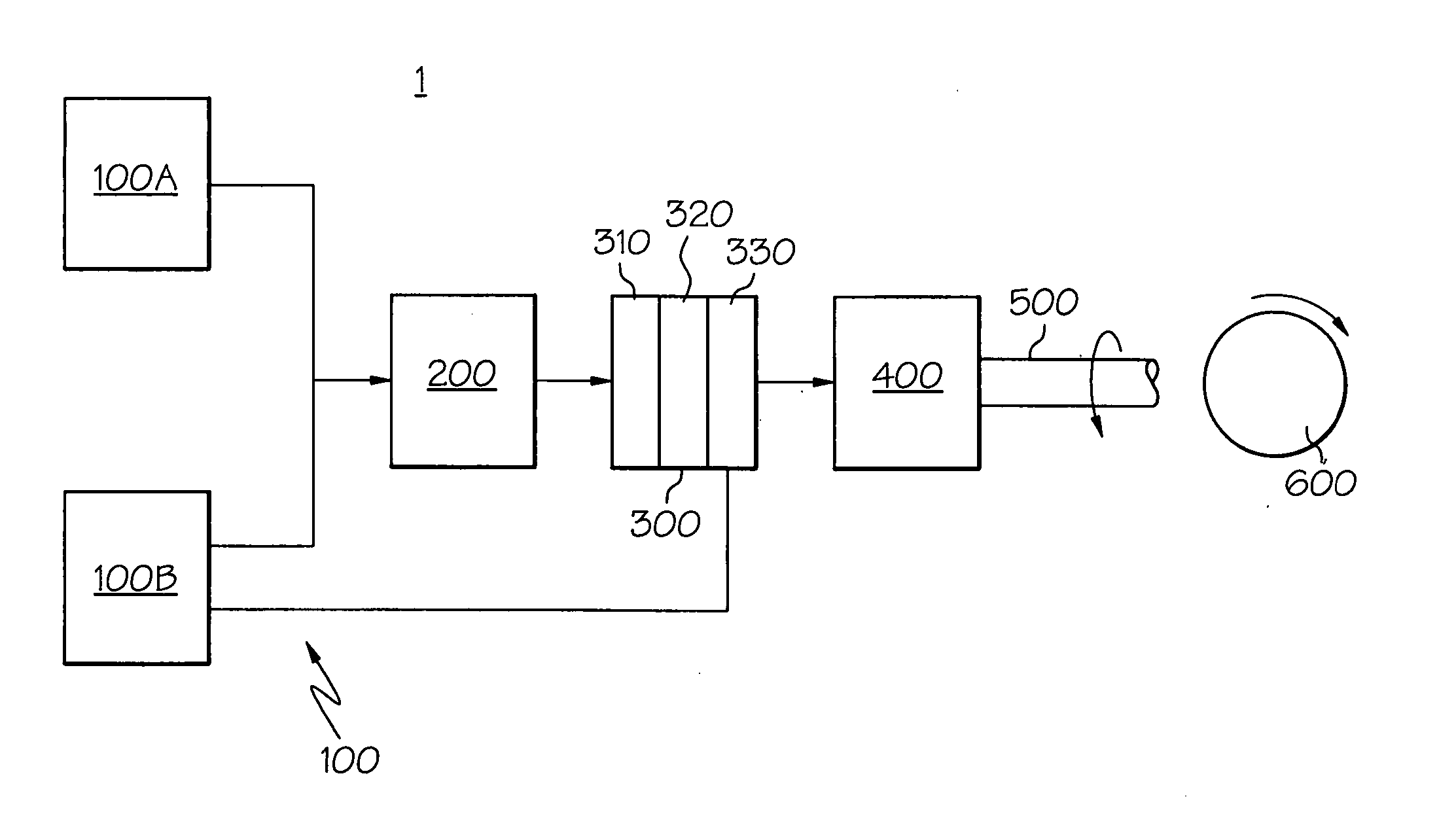Fuel cell shutdown and startup using a cathode recycle loop
a fuel cell and recycle loop technology, applied in the direction of fuel cell details, fuel cell, electrochemical generators, etc., can solve the problems of reducing the life of the fuel cell, exacerbate the aforementioned corrosion of the catalyst and the catalyst support material, and limiting the effectiveness of certain modes of operation
- Summary
- Abstract
- Description
- Claims
- Application Information
AI Technical Summary
Benefits of technology
Problems solved by technology
Method used
Image
Examples
Embodiment Construction
[0024] Referring initially to FIG. 1A, a block diagram highlights the major components of a mobile fuel cell system 1 according to the present invention. The system includes a fuel delivery system 100 (made up of fuel source 100A and oxygen source 100B), fuel processing system 200, fuel cell 300, one or more energy storage devices 400, a drivetrain 500 and one or more motive devices 600, shown notionally as a wheel. While the present system 1 is shown for mobile (such as vehicular) applications, it will be appreciated by those skilled in the art that the use of the fuel cell 300 and its ancillary equipment is equally applicable to stationary applications. It will also be appreciated by those skilled in the art that other fuel delivery and fuel processing systems are available. For example, there could be, in addition to a fuel source 100A and oxygen source 100B, a water source (not shown). Likewise, in some variants where substantially purified fuel is already available, the fuel pr...
PUM
| Property | Measurement | Unit |
|---|---|---|
| voltage | aaaaa | aaaaa |
| open circuit voltage | aaaaa | aaaaa |
| open circuit voltage | aaaaa | aaaaa |
Abstract
Description
Claims
Application Information
 Login to View More
Login to View More - R&D
- Intellectual Property
- Life Sciences
- Materials
- Tech Scout
- Unparalleled Data Quality
- Higher Quality Content
- 60% Fewer Hallucinations
Browse by: Latest US Patents, China's latest patents, Technical Efficacy Thesaurus, Application Domain, Technology Topic, Popular Technical Reports.
© 2025 PatSnap. All rights reserved.Legal|Privacy policy|Modern Slavery Act Transparency Statement|Sitemap|About US| Contact US: help@patsnap.com



